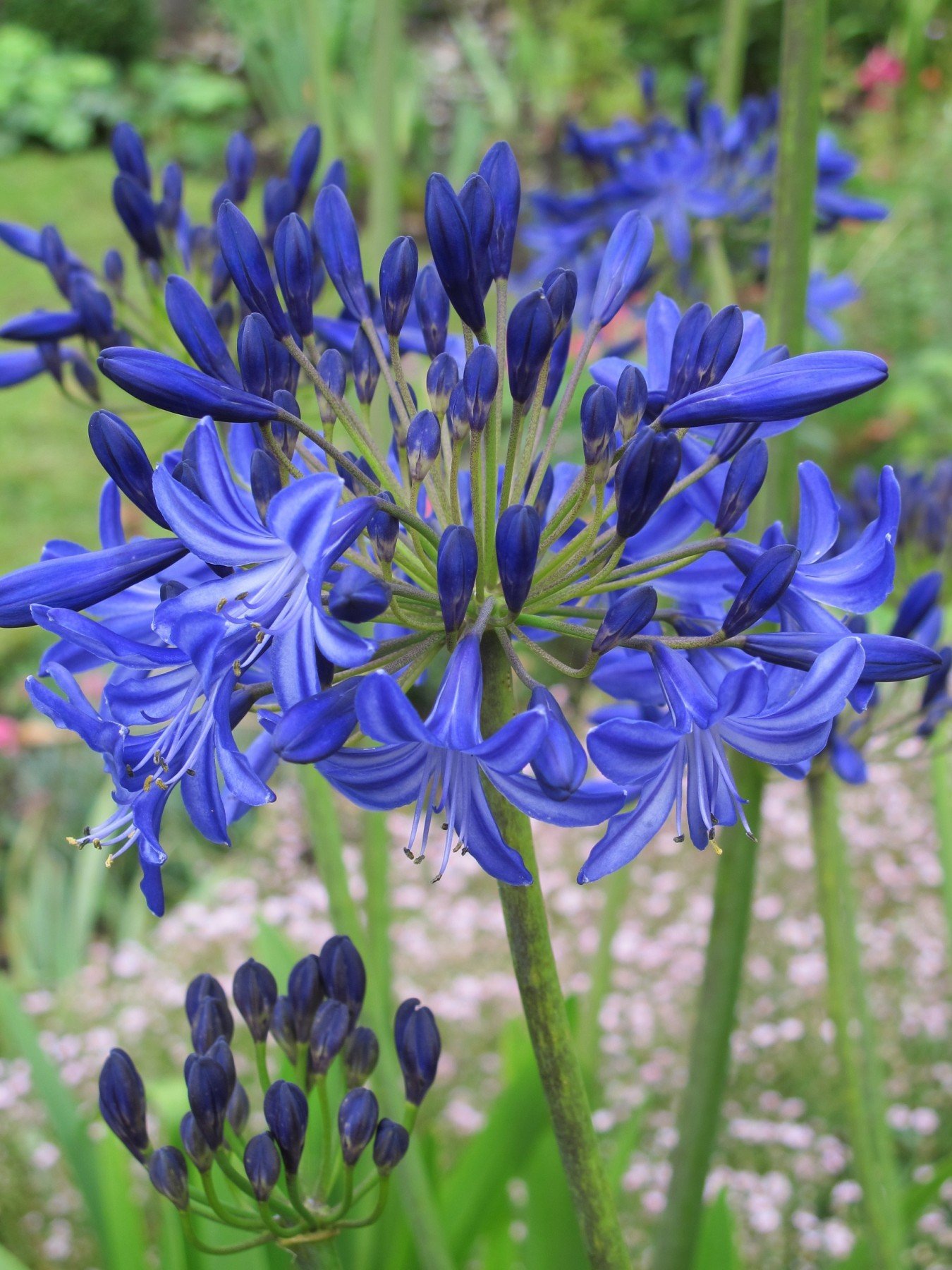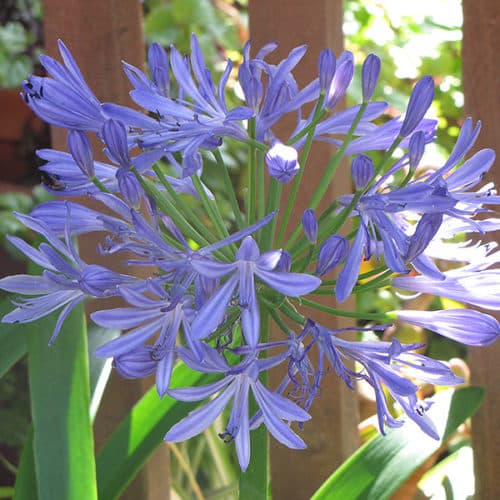Agapanthus Varieties: Picking the Best for Your Landscape
Agapanthus Varieties: Picking the Best for Your Landscape
Blog Article
Letting Loose the Secret to Effective Agapanthus Farming: Idea for a Flourishing Yard
In the world of horticulture, cultivating agapanthus efficiently calls for a calculated approach that includes numerous facets of plant care. By understanding the subtleties of agapanthus growing, one can produce a setting where these plants prosper and flower abundantly.
Planting Agapanthus: Best Practices
When planting Agapanthus, appropriate dirt preparation is important for guaranteeing effective growth and advancement of these gorgeous blossoms. Agapanthus, commonly called Lily of the Nile or African lily, grows in well-draining dirt with a slightly acidic to neutral pH level - Agapanthus. Prior to planting, it is essential to amend hefty clay soils with organic matter such as compost or peat moss to enhance drainage and supply essential nutrients for the plants
To plant Agapanthus, pick a location that obtains complete sunlight to partial color, as this will certainly advertise healthy and balanced growth and plentiful flowering. Dig an opening two times the diameter of the plant's root round and put the Agapanthus at the exact same deepness it was previously expanding. Carefully backfill the opening with dirt, pushing down strongly to eliminate any air pockets around the origins.
Water the recently planted Agapanthus thoroughly and remain to maintain the soil evenly moist, specifically during the plant's active growing period. Agapanthus. Applying a balanced fertilizer once a month can additionally sustain the plant's development and flowering. By following these finest methods for planting Agapanthus, you can produce a sensational display of these captivating blossoms in your yard
Suitable Soil Conditions for Agapanthus
For ideal growth and growing success of Agapanthus plants, guaranteeing the dirt conditions are ideal is essential. Agapanthus thrives in well-draining soil with a somewhat acidic to neutral pH level ranging from 6.0 to 7.0. This sort of soil enables ample water drain, avoiding waterlogging which can bring about root rot. To improve soil drain, think about adding raw material such as compost or peat moss when preparing the planting website. Moreover, Agapanthus favors soil that is abundant in nutrients, so integrating a balanced plant food during the expanding period can advertise healthy and balanced development and vivid blossoms.

Watering and Fertilizing Tips
To guarantee healthy development and vibrant blossoms, correct watering and feeding methods are essential for effective Agapanthus cultivation. Agapanthus plants benefit from normal watering, specifically during the growing period.
When it comes to feeding Agapanthus, a well balanced plant food with equivalent parts nitrogen, phosphorus, and potassium can be applied in the springtime to advertise healthy and balanced growth and blooming. Slow-release fertilizers are excellent for giving nutrients progressively over a prolonged period. Avoid over-fertilizing, as this can bring about too much vegetation growth at the expense of blossoms.
Furthermore, integrating organic issue like garden compost right into the soil can boost nutrient degrees and improve dirt framework, helping in the overall their website health of the Agapanthus plants. By adhering to these watering and fertilizing pointers, gardeners can ensure their Agapanthus plants prosper and generate sensational displays of blossoms.
Pruning and Deadheading Strategies
Proper trimming and deadheading strategies play a vital duty in maintaining the health and wellness and aesthetics of Agapanthus plants, complementing the necessary techniques of watering and feeding for successful growing. Pruning Agapanthus includes removing invested flower heads, dead or yellowing fallen leaves, and overall shaping of the plant to advertise far better growth. Deadheading, the procedure of eliminating discolored blossoms, not only enhances the plant's appearance but likewise motivates further growing.
When deadheading Agapanthus, it is a good idea to snip off the flower stem at the base using sharp, clean shears. This procedure redirects the plant's power from seed production back into root and foliage growth, promoting a much healthier and much click to investigate more durable plant. Normal deadheading can expand the blooming duration of Agapanthus and prevent self-seeding, which can lead to overcrowding.
In terms of pruning, Agapanthus usually benefits from a light trim after flowering to clean up the plant and urge fresh growth. Reducing back the spent flower stems and eliminating any dead or damaged vegetation aids keep the plant's vigor and total look. Nonetheless, it is vital to prevent reducing into the crown of the plant, as this can weaken its wellness.

Protecting Agapanthus From Vermins and Diseases
Implementing effective bug and illness administration methods is essential to securing the health and wellness and vitality of Agapanthus plants in cultivation. One typical parasite that influences Agapanthus is the Agapanthus borer, a caterpillar that passages right into the plant, creating damages to the fallen leaves and blossoms.
In addition to insects, Agapanthus are at risk to illness such as origin rot and fungal leaf areas. These concerns can frequently be stopped by making certain proper drain and preventing overwatering. If indicators of disease appear, affected parts of the plant must be quickly eliminated to avoid additional spread. Fungicides might additionally be made use of as a therapy measure, following the maker's guidelines very carefully. By remaining vigilant and dealing with insect and illness problems quickly, garden enthusiasts can help their Agapanthus flourish and thrive.

Final Thought
Finally, effective growing of agapanthus calls for correct growing techniques, excellent dirt problems, sufficient watering and feeding, normal pruning and deadheading, and protection from conditions and pests. By following these pointers and techniques, gardeners can ensure a growing garden loaded with lovely agapanthus blooms. Agapanthus. Remember to preserve consistent care and focus to detail to advertise the health and longevity of these spectacular plants
When planting Agapanthus, appropriate dirt preparation is necessary for ensuring successful development and advancement of these attractive flowers.Water the freshly planted Agapanthus completely and proceed to keep the soil evenly damp, particularly during the plant's energetic expanding period.For optimum growth and flowering success of Agapanthus plants, making certain the dirt conditions are perfect is crucial. When transplanting or planting Agapanthus, guarantee the soil is well-prepared to supply the essential foundation for the plants to develop themselves effectively. One common pest that impacts Agapanthus is the Agapanthus borer, wikipedia reference a caterpillar that tunnels into the plant, creating damages to the flowers and leaves.
Report this page